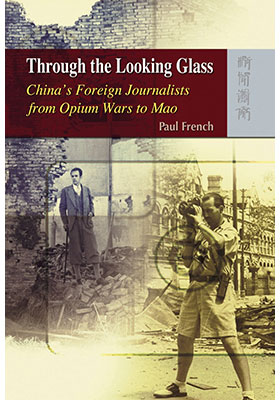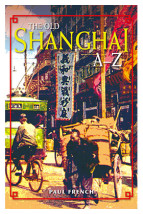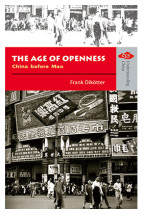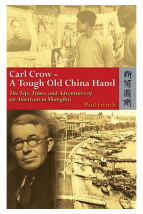Through the Looking Glass
China’s Foreign Journalists from Opium Wars to Mao
(鏡裡看中國:鴉片戰爭到毛澤東時代之間的駐華外國記者)
ISBN : 978-962-209-982-1
May 2009
312 pages, 6″ x 9″
- HK$250.00
Ebooks
Also Available on
The convulsive history of foreign journalists in China starts with the newspapers printed in the European Factories of Canton in the 1820s and ends with the Communist revolution in 1949. It also starts with a duel between two editors over the China’s future and ends with a fistfight in Shanghai over the revolution.
The men and women of the foreign press experienced China’s history and development; its convulsions and upheavals; revolutions and wars. They had front row seats at every major twist and turn in China’s fortunes. They reported on the Opium Wars and the Taiping Rebellion; saw the Summer Palace burn; endured the Boxer Rebellion; witnessed the Qing Dynasty’s death, the birth of a Nationalist China and its struggle for survival against rampant warlordism. They followed the rise of the Communists, total war and then revolution. When the Unequal Treaties were signed, the foreign press were there; when foreign troops occupied and looted Beijing in 1900 they were present too; they saw the Republic born in 1911 and an increasingly politically strident China assert itself on May Fourth 1919. Foreign journalists stood in the streets witnessing the blood letting of the First Shanghai War in 1932 and then were blown of their feet by the bombing of the Second Shanghai War in 1937. They tracked Japanese aggression from the annexation of Manchuria, the fall of Shanghai and the Rape of Nanjing through to the assault on the Nationalist wartime capital of Chongqing as they cowered in the same bomb shelters as everybody else. They witnessed the fratricidal Civil War, the flight of Chiang Kai-shek to Taiwan and the early days of the People’s Republic. The old China press corps were the witnesses and the primary interpreters to millions globally of the history of modern China and they were themselves a cast of fascinating characters.
Like journalists everywhere they took sides, they brought their own assumptions and prejudices to China along with their hopes, dreams and fears. They weren’t infallible; they got the story completely wrong as often as they got it partially right. They were a mixed bunch—from long timers such as George ‘Morrison of Peking’; glamorous journalist-sojourners such as Peter Fleming and Emily Hahn; and reporter-tourists such as Ernest Hemingway and Martha Gellhorn along with numerous less celebrated, but no less interesting, members of the old China press corps. A fair few were drunks, philanderers and frauds; more than one was a spy—they changed sides, they lost their impartiality, they displayed bias and a few were downright scoundrels and liars. But most did their job ably and professionally, some passionately and a select few with rare flair and touches of genius.
“Opium-addict, concubine, missionary, spy—Paul French brings to life the larger-than-life personalities of a bygone China foreign press corps. Reading Through the Looking Glass makes me wish I’d become an old China hand a century earlier.” —Melinda Liu, who first began reporting on China 25 years ago. Liu is Newsweek’s Beijing Bureau Chief and former president of the Foreign Correspondents’ Club of China.
“Through the Looking Glass is wonderful and layered. On one level, it is a delightful insight into the antics of the foreign press corps in an exotic land—a bit like Scoop, but true. On another, it is a historical treasure trove; we learn how Hemingway and Marx saw China, and we revel in the story of Queen Victoria’s Pekinese dog, ‘Lootie’. Lastly, it holds a ‘looking glass’ up to the imperfections of perspective that is as relevant now as ever.” —James Kynge, former Financial Times Beijing Bureau Chief and author of China Shakes the World
“Enthralling. With a fascinating cast of characters and a dramatic narrative of events, this book provides a new window on to this tumultuous period of Chinese history as well as showing how journalism really works on the ground, for good or ill.” —Jonathan Fenby, author of the Penguin History of Modern China and China Director at Trusted Sources Research
“Paul French’s latest publication is a fascinating hybrid of a book. It’s part wonderfully useful reference tool (detailing who covered China when for which newspaper), part irreverent and gossipy behind the scenes look at journalism during an eventful period of Chinese history (filled with cheeky asides about famous, infamous, and once-famous but now forgotten writers), and part thoughtful meditation on the curious hold that the world’s most populous country has long had on the Western imagination. Though focusing on the past, it has much to offer anyone interested in the twists and turns of contemporary Western media coverage of the PRC. As French notes, after all, this is not the first time that people around the world have become fascinated by and concerned about Chinese developments—nor even the first when celebrity writers (Hemingway and Isherwood during World War II, Thomas Friedman and Dave Barry during the Beijing Games) have found it alluring to spend a stint working the China beat.” —Jeffrey Wasserstrom, Professor of History at University of California at Irvine, co-founder of “The China Beat” blog, and author, most recently, of Global Shanghai, 1850–2010.








